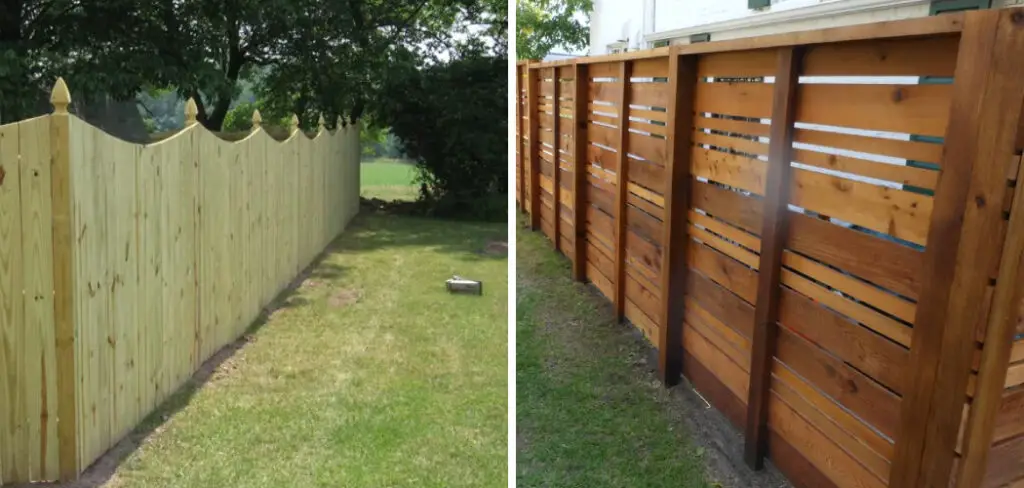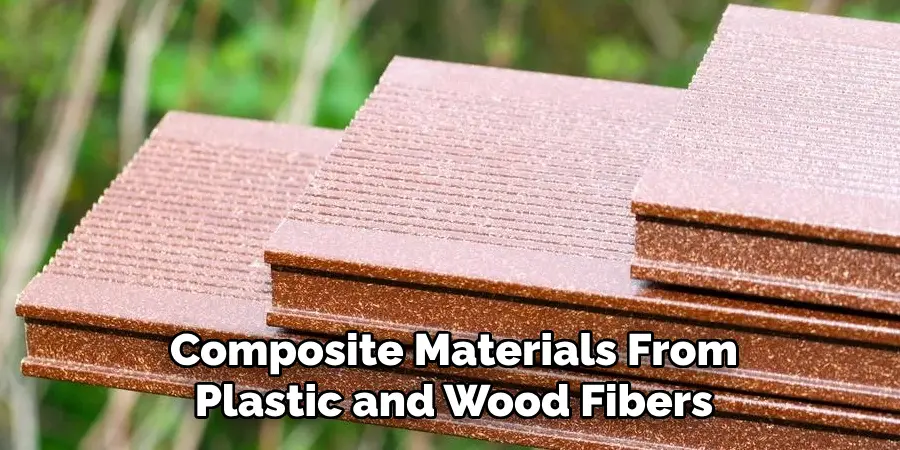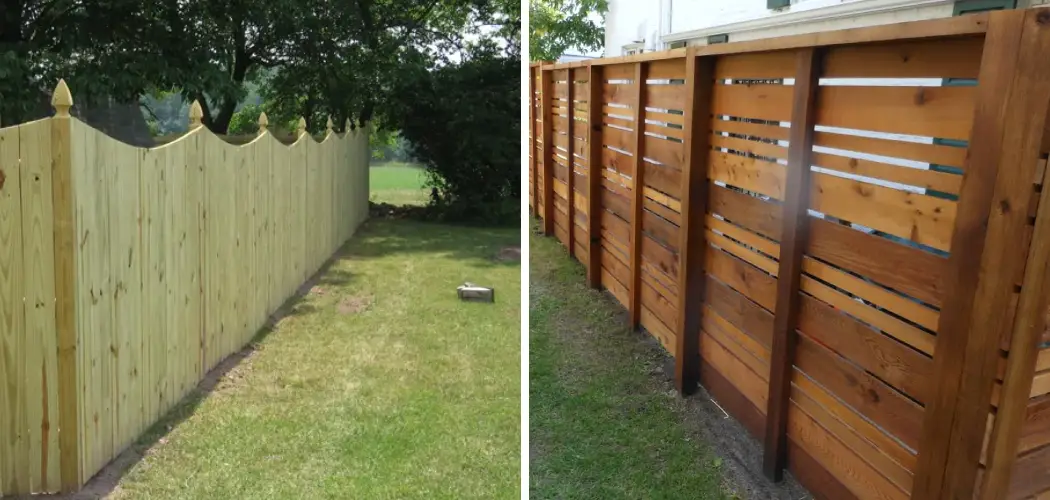Understanding how to tell if fence is cedar or pine is crucial for homeowners and professionals alike. Distinguishing between these two common types of wood can impact long-term durability, maintenance requirements, and overall cost-effectiveness.

Cedar is known for its longevity and minimal care, while pine offers a more budget-friendly solution but requires diligent upkeep.
This article is divided into two comprehensive parts: the first explores the physical characteristics distinguishing these woods through visual clues and tactile comparisons, and the second delves into their maintenance and long-term care, ensuring you make an informed decision on which fencing material suits your needs.
How to Tell if Fence Is Cedar or Pine: A Comprehensive Guide
1. Visual Inspection
Identifying whether a fence is constructed of cedar or pine wood can greatly be discerned by a close visual inspection. Cedar typically presents a palette of rich and warm tones ranging from light amber to deep reddish-brown hues.
This natural coloration adds to cedar’s aesthetic appeal and contributes to its popularity as a fencing material. Conversely, pine has a more uniform yellowish or whitish appearance, marked occasionally by brown knots and resin streaks, allowing for a brighter but less varied presentation.
Examining the grain pattern of the wood can also provide insightful indicators. Cedarwood boasts a fine, straight grain with a consistent, smooth texture that’s pleasing to the eye.
It possesses a certain uniform quality that indicates the species, with fewer interruptions in its pattern. Pine wood is easily recognized by its prominent grain that often contains tight, darker knots. These knots vary in size and frequency, sometimes large and conspicuous, serving as one of the definitive features that can help distinguish pine from cedar.
Knots are inherent to cedar and pine, yet they present quite differently. In pine, they are more pronounced, irregular in size, and often abundant, limiting the wood’s structural integrity but adding to its rustic character. Cedar, in contrast, has fewer and smaller knots, which generally enhances the wood’s structural soundness and offers a more refined appearance.

Saw marks on these woods can offer additional clues. Pine often shows wider, rougher saw marks due to its softer nature when cut. Cedar’s saw marks tend to be narrower and cleaner, reflecting the wood’s hardness and the fine tools used to work it.
As both types of wood weather over time, their appearance evolves. Cedar is known for aging gracefully, developing a distinguished silvery-grey patina that many find attractive and protective in its weather resistance. Pine weathers quite differently, tending to show darker water streaks and patches, reflecting its vulnerability to elements if not properly sealed.
By these distinctive characteristics, one can better understand how to tell if fence is cedar or pine through meticulous visual inspection, playing a vital role in further maintenance and preservation decisions.
2. Touch and Smell
The tactile experience of touching a wood fence can often be the most immediate indicator of its material. Cedar is renowned for its satiny-smooth texture, which comes from its fine grain. Running your hand along a cedar fence, you’re far less likely to encounter splinters than with pine, which has a coarser feel.
The rougher texture of pine is more prone to splintering due to its larger knots and variable grain structure, making it important for owners to sand the surface periodically to maintain a smooth finish.
Splinter patterns in these woods reflect their makeup and handling. Cedar, being more resilient to splitting due to its natural oils, often has flat and less jagged splinters, whereas pine’s propensity to crack can lead to sharper, more haphazard splinters. This characteristic could be key in determining the type of wood, especially if visual cues are weathered or unclear.
Moreover, the unique scents of these woods provide further distinctions. Cedar’s aroma is undoubtedly strong and distinctive—often described as pleasingly earthy with a hint of spice. This aromatic quality not only adds sensory appeal but also serves to repel insects naturally. While also resinous, Pine emits a subtler fragrance that is lighter and less enduring than cedar.

Its scent may remind one of fresh sap or a faint turpentine smell, which is less noticeable as it ages. These sensory experiences—of touch and smell—offer a significant, yet often overlooked, means of identifying whether a fence is cedar or pine, complementing the visual inspection with an olfactory and tactile dimension.
3. In-Depth Examination
An in-depth examination can yield decisive information when determining if a fence is a cedar or pine. One technique involves sanding a small, inconspicuous area of the wood. This process removes the weathered surface, exposing the color and grain structure beneath.
Cedarwood typically reveals a vibrant, reddish hue with a straight, even grain, whereas pine shows lighter colors and a more pronounced grain pattern with knots.
A scratch test can also shed light on the type of wood. Because pine is softer than cedar, it’s more susceptible to scratches and indentations. By using a fingernail or a small knife, you can gently scratch the surface of the wood.
A soft pine will yield to pressure more easily, displaying a visible mark, while cedar is denser and will show minimal scratching.
Another insightful examination is the water test. Cedarwood, which contains natural oils, will repel moisture more effectively when a few droplets of water are placed on the surface. Consequently, water tends to form beads on the surface of cedar, whereas it soaks into pine more readily, darkening the wood as it absorbs the moisture.
Lastly, the use of a moisture meter can be helpful in distinguishing between seasoned and unseasoned wood, which is particularly pertinent if the fence has been recently installed. A moisture meter can detect the level of moisture in the wood; seasoned wood typically has lower moisture content.
Since both cedar and pine are used in fencing, this tool won’t differentiate between the two types of wood but will provide insights into their condition and readiness for treatment or sealing.
By combining these examination methods—sanding, scratching, water test, and moisture meter readings—one can confidently identify the type of wood used in a fence, leading to better-informed maintenance practices and extending the life of the structure.
Additional Considerations
Location plays a significant role in choosing the material for a fence. Cedar is often favored for its natural resistance to rot and decay in regions with high humidity or rainfall.
Its ability to withstand wetter conditions without succumbing to moisture-related damages makes it ideal for areas such as the Pacific Northwest. On the other hand, pine is typically more affordable and a popular choice in areas where budget considerations are paramount, even if it may require more maintenance in the long term.

Treatment of the wood can alter both its appearance and durability. Pressure-treated wood often has a greenish tint and may feel slightly damp to the touch due to the chemicals used to extend its life against insects and decay.
A clear way to identify if a fence is treated is by looking for a stamp or tag indicating the type and treatment level. A sealant or stain might be applied to cedar to enhance its natural color and protective characteristics.
Seeking professional help is advisable when there’s uncertainty about the species of wood or if the construction of the fence is complex. Professionals have the knowledge and tools to conduct more thorough examinations and can provide advice on maintenance or restoration.
Moreover, a qualified expert can assist when a fence faces structural issues or when considering the addition of a new fence that complements the property, increases landscape value, and ensures long-term stability.
Maintenance Needs
Cedar Maintenance
Cedar boasts an impressive natural rot resistance attributed to its inherent oils. These oils serve as a deterrent to wood-damaging insects and help prevent decay even in damp environments. Consequently, cedar fences require minimal maintenance to preserve their integrity.
A biennial inspection and cleaning to remove any accumulated dirt or debris is typically sufficient. Staining or sealing is an option, not a necessity, as cedar will age naturally to a silvery-grey finish if left untreated. Nevertheless, applying a stain every three to five years can maintain its rich original hue and enhance rot resistance.
Pine Maintenance
In contrast, pine is much more susceptible to rot and requires concerted efforts to ensure its longevity. The soft nature of pine makes it imperative to treat the wood with preservatives, and the application of a water-repellent sealant every two years is recommended.
Regular maintenance should also include inspecting for any signs of insect infestations or rot, particularly near the ground where the wood is more likely to be moist. Applying a fresh coat of paint or stain can provide an additional protective layer and help maintain the structural integrity of a pine fence.

Cleaning Methods
When it comes to cleaning, both cedar and pine benefit from periodic mildew removal and general cleansing. A mild detergent and water solution, applied with a soft brush, can effectively remove surface dirt and any mildew growth.
For a deeper clean, pressure washing at a low setting can be employed, though care must be taken not to erode the softer pine wood or to damage the surface of cedar.
Trimming and Repairs
As for trimming and repairs, cedar doesn’t usually require extensive pruning, given its durability. However, any broken or damaged boards should be replaced as soon as possible to prevent further compromise.
On the other hand, pine fences may regularly need to be checked for splintered or cracked boards, and these should be swiftly dealt with either by sanding smooth or replacing the boards entirely.
Maintaining a wooden fence, whether cedar or pine, involves a balance of proactive care and responsive repairs. Cedar, with its natural resilience, requires less attention, making it a more hands-off option for many homeowners. Pine, while economical, demands a consistent upkeep schedule, highlighting the trade-off between initial savings and ongoing maintenance efforts.
Both kinds of wood, however, when treated with respect to their natural properties, can provide a beautiful and functional fencing solution for years to come.
Finishing Options
Finishing outdoor wood structures is essential to extend their life and maintain their aesthetic appeal. Here are comprehensive guidelines considering cedar and pine fences.
Cedar Finishing
For cedar fences, owners have the luxury of preserving the wood’s natural look or enhancing it with color. Cedar can be left untreated to mature into a classic gray-silver patina over time. However, to maintain cedar’s original rich tone, a transparent stain or clear sealant may be applied, which contains UV inhibitors to prevent the sun from fading the wood.

For those desiring a bit of color, semi-transparent stains can be an excellent choice. They enrich the wood’s natural grain with subtle shades while offering additional protection against the elements. Solid stains will cover the wood grain but provide a wide array of color choices, transforming your fence into a statement piece that can complement your home’s exterior.
Pine Finishing
Pine wood requires careful selection of finish due to its susceptibility to rot. Unlike cedar, pine should never be left untreated if used outdoors. A crucial step in preserving pine is choosing water-based sealants that penetrate the wood and provide a protective coat against moisture.
Oil-based products should be generally avoided, as they can attract the sun’s heat, increasing the potential for cracking and warping of the pine boards.
It’s important to also ensure any sealant chosen for a pine fence is specifically formulated to ward off insects and decay agents, thus prolonging the fence’s life. Regular reapplication according to the product’s guidelines is necessary to maintain the effectiveness of the protective layer.
Application Considerations
When selecting finishes, factors like the weather patterns of your locale must be considered. For example, finishes with mold and mildew resistance are particularly important in humid climates. Additionally, aesthetic preference plays a critical role; some owners prefer a more natural look, while others might want a particular color to match their home.
DIY vs. Professional Application
For DIY enthusiasts, applying fence finish can be a weekend project with potential cost savings. The successful DIY approach depends on the necessary tools and understanding of the staining or sealing process. However, disadvantages include the potential for uneven application or the choice of incorrect products.

In contrast, the professional application generally ensures quality as professionals have the expertise to choose suitable materials and employ techniques that ensure even coverage and durability and can address unforeseen complexities. This, however, comes with increased monetary costs and the need to vet and hire a trustworthy service provider.
In summary, whether cedar or pine, selecting the appropriate finishing options and considering the specific characteristics of the wood and environmental conditions is crucial. The choice between DIY and hiring a professional will often boil down to the individual’s skill level, budget, and desired project outcomes.
Long-Term Considerations
Weatherproofing
In the realm of safeguarding wooden fences against the ravages of time and climate, vigilance in weatherproofing cannot be overstressed. Despite its inherent resistance to decay, Cedar benefits greatly from the regular maintenance of sealant layers, especially in regions afflicted by severe weather.
This protective measure forestalls the inclement effects of moisture, wind, and ultraviolet light. Pine, more vulnerable to the elements, demands closer attention; a diligent resealing routine is critical to its longevity and can mean the difference between a structure that endures seasons and one that succumbs prematurely to weather-induced wear.
Repair and Replacement
Repairs for cedar often involve dealing with isolated incidents of board warping or the rare occurrence of insect damage. At the same time, pine, due to its softer nature, is more prone to scratches, dents, and larger areas of rot.
In cases where extensive damage has compromised the fence’s stability or appearance, replacement of the affected boards or panels becomes necessary. Whereas cedar boards may be replaced less frequently but at a higher individual cost, pine boards, although cheaper, may necessitate more frequent replacements over the fence’s lifetime.
Cost Comparison
When evaluating the long-term financial implications of fencing material choices, the initial lower cost of pine can be misleading. The cumulative expenses of biennial sealant applications and the potential for more frequent repairs can ultimately eclipse the upfront savings.
Cedar, conversely, has a higher initial investment but tends to require less maintenance and fewer repairs, which may translate into a more cost-effective solution over many years.
Homeowners must consider their willingness to invest time and money into the upkeep of their outdoor wood structures to inform their choice between cedar’s durability with less frequent costs and pine’s continuous but smaller expenditures.
Sustainability and Environmental Impact
In considering the environmental impact of fence materials, sustainability practices in sourcing and treating wood are paramount. Cedar and pine each have unique environmental footprints, starting with their harvesting methods.
For a more eco-conscious approach, sourcing wood from suppliers that hold certifications like the Forest Stewardship Council (FSC) ensures that the wood has been harvested responsibly, supporting forestry practices that protect biodiversity and reduce damage to ecosystems.
Moreover, when it comes to treating the wood, it’s essential to use products that have minimal impact on the environment. Low-VOC (volatile organic compounds) or water-based sealants and stains are preferable over harsh chemical options that can leach into the soil and harm local flora and fauna.

As for alternatives with lower environmental impact, composite materials from plastic and wood fibers have gained prominence; these materials often incorporate recycled elements and do not require the chemical treatments necessary for protecting natural wood, making them a greener choice over the long term.
Recycled plastics and metals are also viable options, offering durability and reducing the demand for forestry resources. These alternative materials support a circular economy, where waste is minimized, and materials are reused, contributing to a more sustainable approach in fence construction.
Conclusion
In summary, maintaining and finishing cedar and pine fences is paramount for longevity and aesthetic appeal. With its natural resilience, Cedar requires less maintenance but demands a higher initial investment. While more cost-effective upfront, Pine necessitates diligent upkeep and frequent treatments to remain in good condition.
Understanding how to tell if fence is cedar or pine is crucial, as each wood type has distinct maintenance requirements and durability. Cedar typically has a reddish hue with a pleasant scent, while pine is lighter with visible knots. Investing time and resources into proper maintenance or opting for professional services ensures that whichever wood you choose will deliver the most value.
For additional resources and to explore specific product recommendations, homeowners are encouraged to research further and consult with local experts to align with their specific needs and preferences, thus making an informed decision for their property fencing.
About
Outdoor Fixes is a distinguished figure in the world of Diy design, with a decade of expertise creating innovative and sustainable Diy solutions.
His professional focus lies in merging traditional craftsmanship with modern manufacturing techniques,
fostering designs that are both practical and environmentally conscious. As the author of diy,
outdoorfixes delves into the art and science of outdoorfixes-making, inspiring artisans and industry professionals alike.
Education RMIT University
(Melbourne, Australia) Associate Degree in Design (Outdoor Fixes) Focus on sustainable design, industry-driven projects,
and practical craftsmanship. Gained hands-on experience with traditional and digital manufacturing tools, such as CAD and CNC software.
Nottingham Trent University
(United Kingdom) Bachelor’s in outdoorfixes.com and Product Design (Honors) Specialized in product design with a focus on blending creativity with production
techniques. Participated in industry projects, working with companies like John Lewis and Vitsoe to gain real-world insights.
Publications and Impact
In diy, Outdoor Fixes his insights on indoor design processes, materials, and strategies for efficient production.
His writing bridges the gap between artisan knowledge and modern industry needs, making it a must-read for both budding designers and seasoned professionals.

